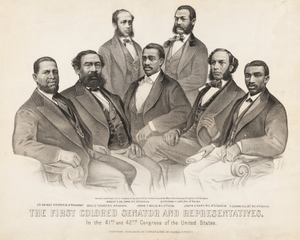Description
Prior to leading his famous assault in 1859 on the federal arsenal at Harpers Ferry, John Brown made national headlines for his abolitionist activities in Kansas and Missouri. Having worked as a tanner and later a wool merchant in the East, Brown decided in 1855 to travel to Kansas, where five of his sons had taken up homesteads. Pro-slavery "border ruffians" from Missouri increasingly threatened free-state supporters in Kansas, and the sons hoped their father would bring weapons to protect them. Following an attack on the town of Lawrence, Kansas, by pro-slavery forces, Brown joined a guerrilla band that ultimately killed five men in Pottawatomie County, an act that further escalated regional tensions and led to the burning of the town of Osawatomie by pro-slavery forces. These events served as a prelude to Brown's eventual plan to lead a mass slave uprising-a goal that fell short when he was captured and hung at Harpers Ferry.
Image
Salted Paper Print
National Portrait Gallery, Smithsonian Institution





















